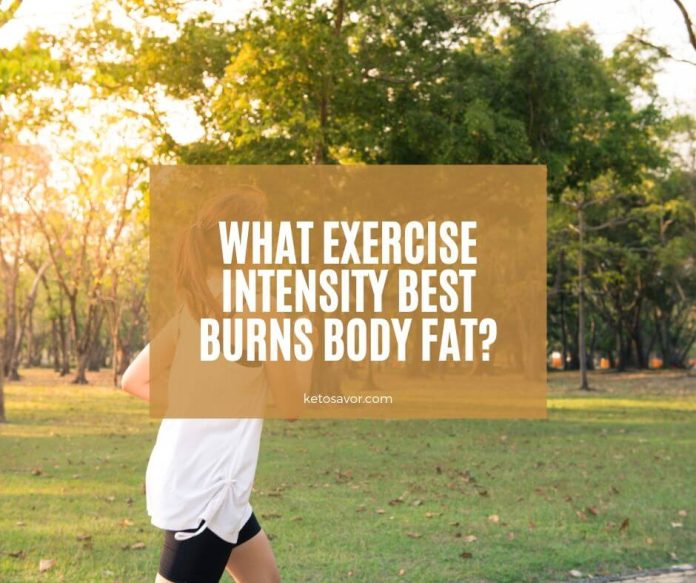What exercise intensity is most effective to burn body fat? Is it high, medium, or low intensity and why?
I found this to be a curious question – I always thought that low intensity was the fat burning area – that’s what my coach has always said to me. This is how my metabolic tests always come back.
Heart rate is measured along the bottom of this graph. So, I start the test walking, and it gets harder and harder, higher hills, faster pace, till I can go no longer. I am hooked up to a heart rate monitor and a machine measuring oxygen output. As you can see, it tells me that I am 100% fat burning at the easiest intensity.
I asked Dave Sutton (UKSCA accredited Sports conditioning coach) why he was telling me the opposite. He said this was showing me calories from fat (burning the fat by means of burning calories while exercising). I was confused.
This is what a generic definition will show you:
Fitness Zone (Fat Burning) — 60 – 70% of maximum heart rate: This zone provides the same benefits as the healthy heart zone, but is more intense and burns more total calories. The percent of fat calories is still 85%.
But what does that mean? His explanation was that burning calories from fat is higher in low intensity work, however high intensity and resistance training = more fat burning overall and higher MBR (base metabolism rate). This sounded like the opposite of what I have always known. As always, he then sent me some research to back it up.
The Research:
Aerobic and progressive resistance training was tested on two groups, one group did cardio, one progressive resistance training. Weight, body mass index, body fat, waist circumference, waist: hip ratio, blood pressure, and peak oxygen consumption were all measured.
Results:
So, were both theories right then? It seems so. There’s more.
Effect of exercise training intensity on abdominal visceral fat and body composition:
This one was examining the effects of exercise training intensity on abdominal visceral fat and body composition in obese women with the metabolic syndrome. The groups were given different levels of exercise: none, minimal, low, lactate threshold and high.
They conclude that high intensity work is best for reducing visceral and abdominal fat. This theory would also be supported by the other study.
Search this term and you will see many more that support the theory, here and here (pdf).
Conclusions
· High intensity exercise can it seems, be more effective in lowering body fat % -the opposite of what I actually thought.
· Without a cardio base, however, you will tire faster, lose speed and overall end up slower.
· Both are important, but if burning fat is the aim, a good cardio base with enable you to work at a higher intensity for longer.
· Both high and low intensity work have their own advantages and one should not be omitted in favour of the other.





